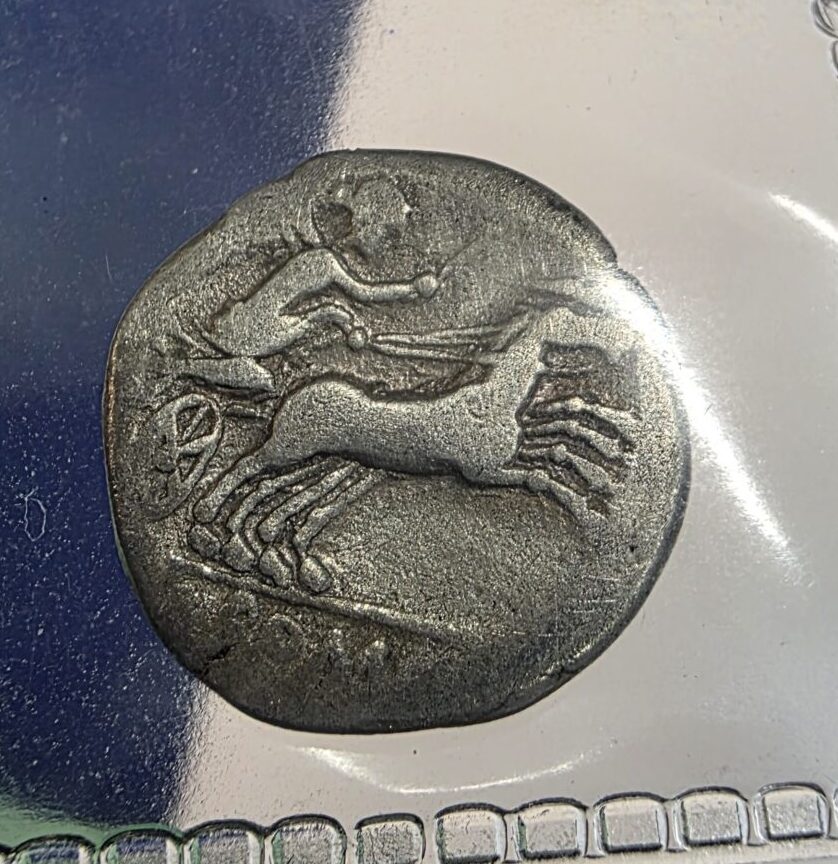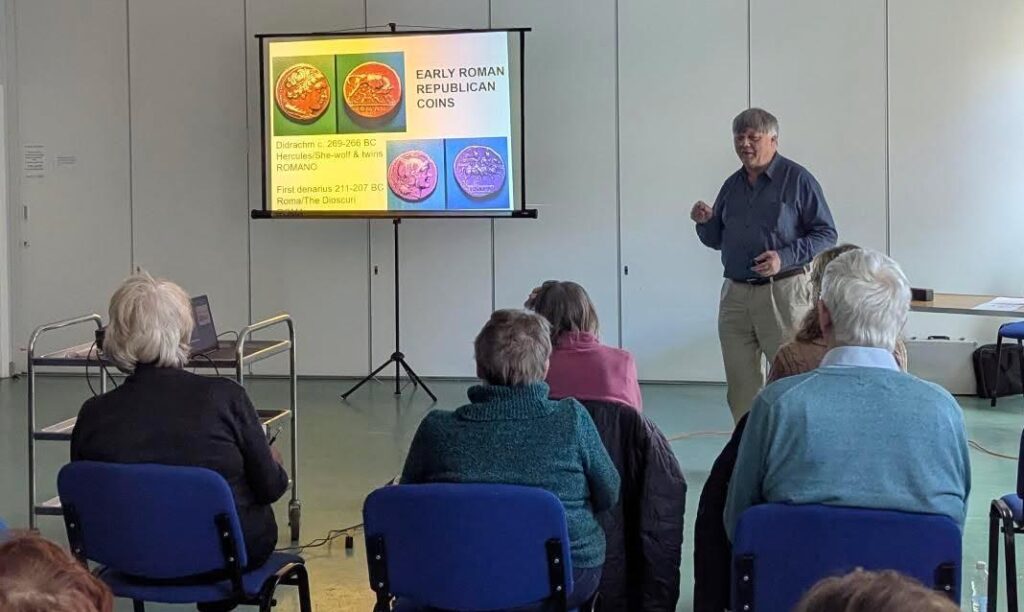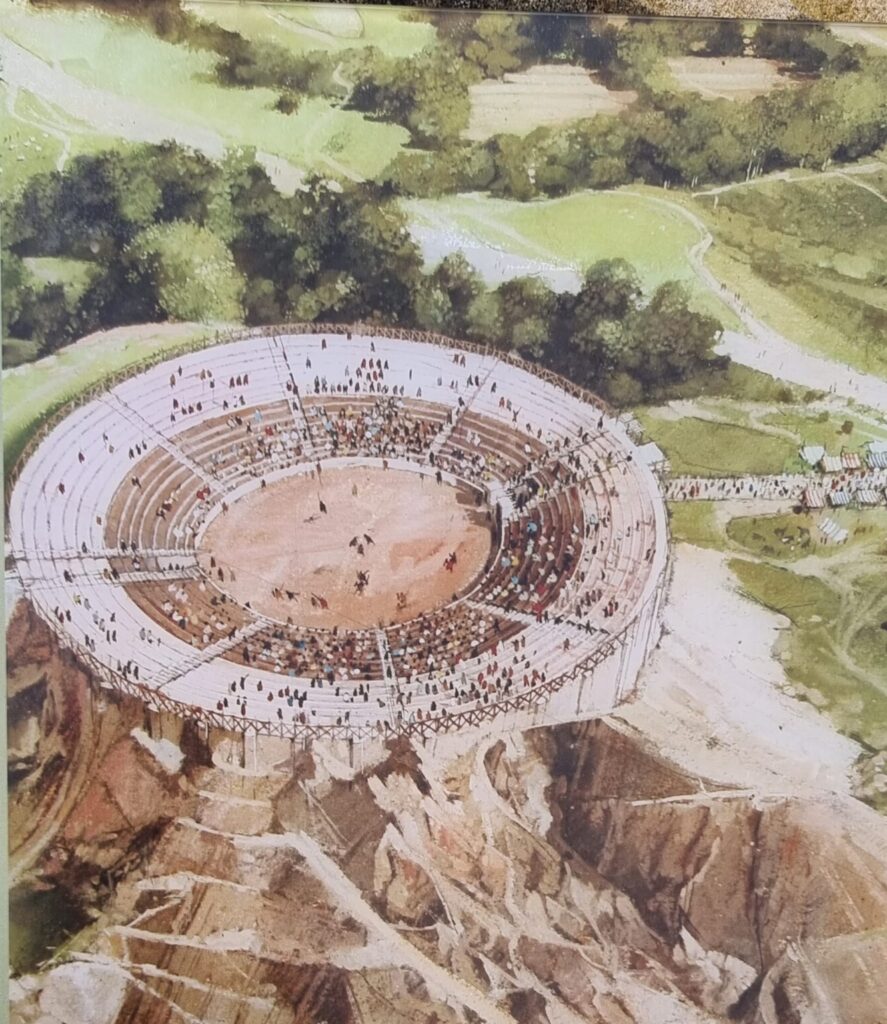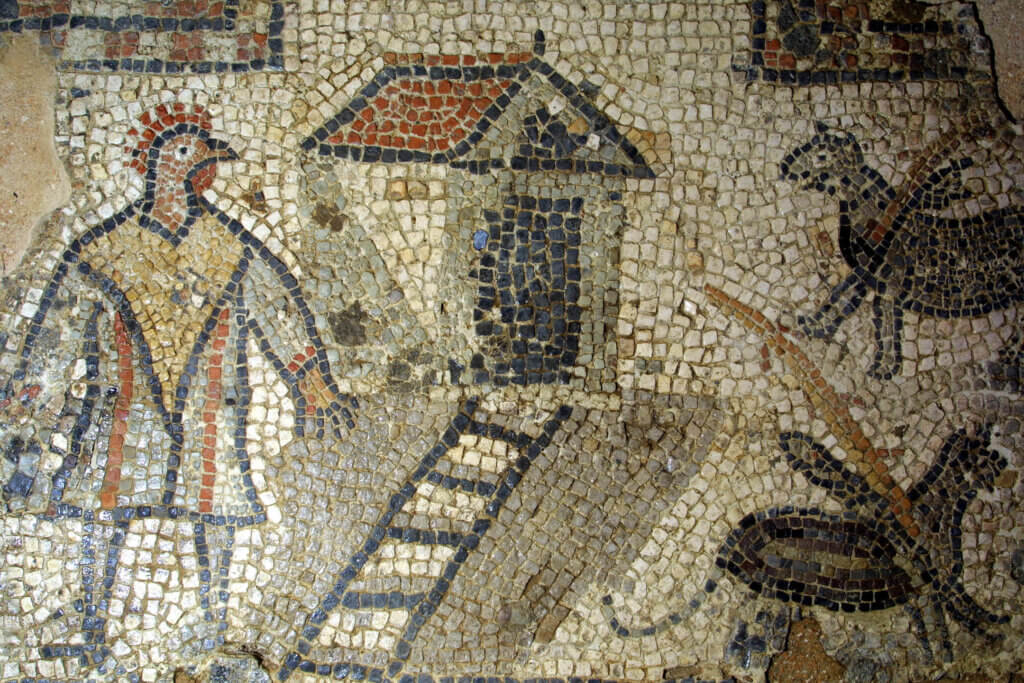I recently attended a coin workshop day organised by Brighton & Hove Archaeological Society (well worth joining if you are in the area). I got to hold some very interesting Roman and Celtic coins and learned about a link involving Philip II of Macedon (Alexander the Great’s dad) to the latter type. If you want to read more about coins there’s my visit to Worthing Museum and the British Museum where I saw some wonderful coins from ancient Sicily.
Celtic tribes in Britain.
The below coin dates to before the Claudian invasion (AD 43) and was minted by the then King, Cunobeline. It was found at Colchester, then known as Camulodunum and features an ear of wheat (or perhaps barley).
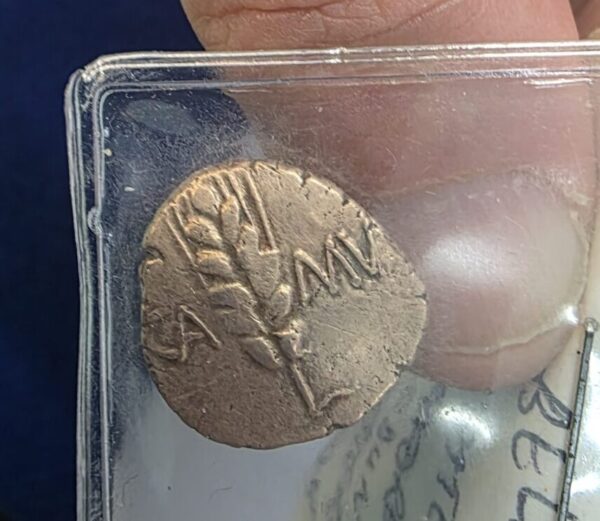
Something which you might note from the photo is just how small the coins were, you can also make out ‘CAMU’ which is thought to be Camulodunum.
Celtic coin tradition and Philip II of Macedonia.
The coin below is a golden Gallo-Belgic stater which dated to around the mid 1st century BC. If you look closely you can make out a horse.
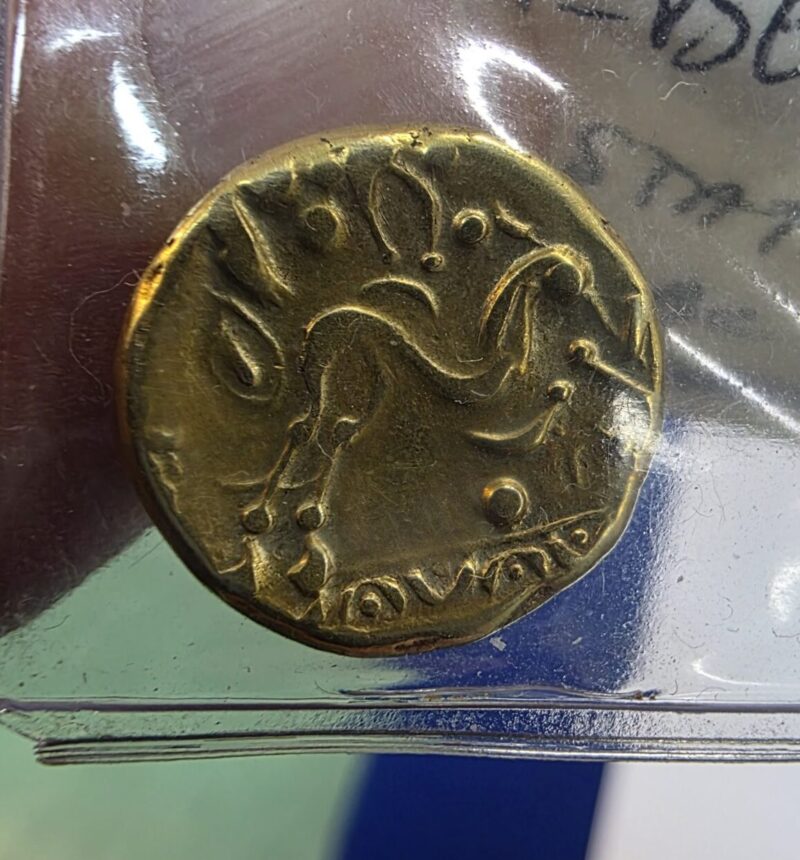
The depiction of a horse was popular in Celtic coinage, eventually becoming a highly stylised image. However, this had its roots in a much earlier coinage. Philip II of Macedon had coins issued (gold staters) which featured a charioteer on one side and the head of Apollo on the other.
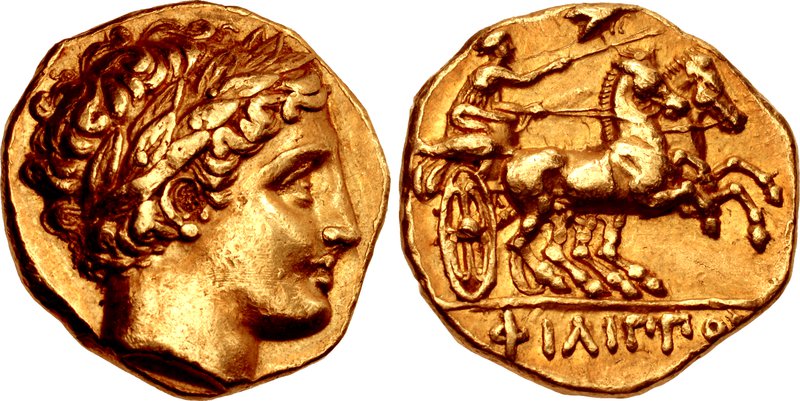
This became a highly influential coin with both the charioteer changing over time and the head of Apollo becoming quite abstract. The former becoming a horse, sometimes with the wheel underneath it. As for the head of Apollo, well, look at the one below (a Gallo-Belgic Ambriani).
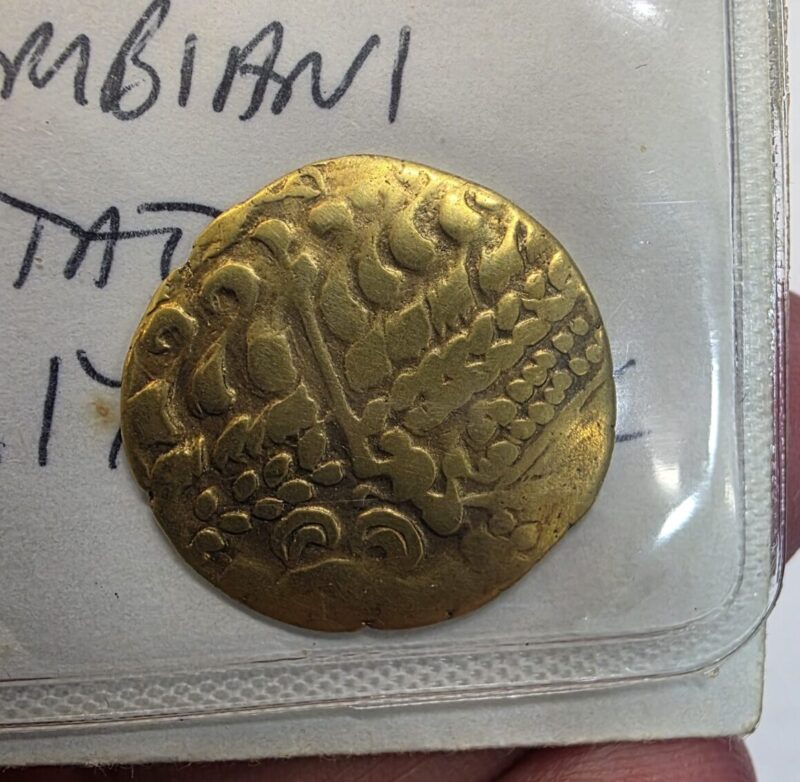
Here we can see a likeness, though more in pattern than anything, a repeating feature is the laurel wreath pattern which appeared on Celtic coins as well. Here’s a good example of some others as well.
I also filmed a short video explaining it (from my YouTube channel).
And finally, Rome.
The Republican denarius dated to 211-209 BC and featured the head of Roma on one side and a chariot rider on the other. It was obviously a popular image (though Rome will probably tell you it was all their idea). In fairness to the Romans the chariot remained a very popular thing, chariot races were hugely popular even before the Imperial period. To give some historical perspective this coin was minted when Hannibal was in southern Italy. It’s one of the oldest Roman coins I’ve ever had the chance to see up close.
